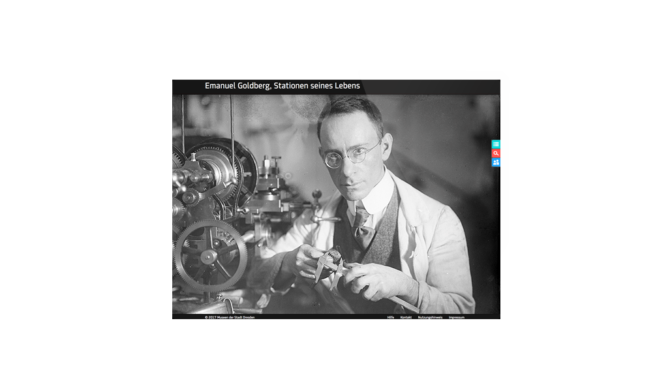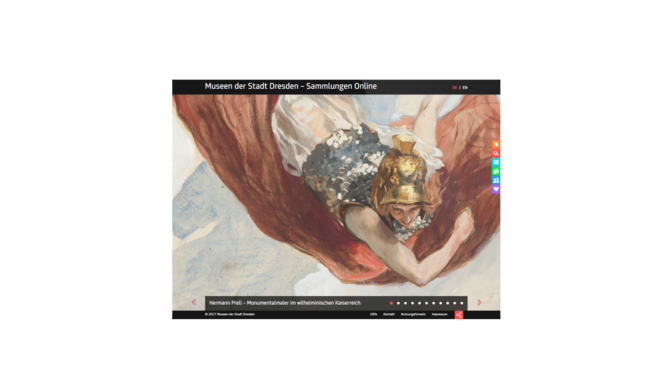Die Pflegeeinrichtungen der Diakonie Hamburg haben ein neues Jobportal: pflege-jobs.hamburg. Es richtet sich an Jobsuchende in der Altenpflege und bietet viele Informationen über freie Stellen, Arbeitgeber und Karrieremöglichkeiten.
Die Webseite haben wir für die Diakonie umgesetzt und wünschen viel Erfolg für die begleitende Kampagne.
Monthly Archives: April 2017
Spendenportal
… english translation coming soon …
Museum display
For the museums in the city of Dresden we have created a collection database which acts as a virtual museum. In a temporary exhibition focusing on the Jewish inventor Emanuel Goldberg, who, amongst other achievements, was a co-founder of Zeiss Ikon, an adaptation of this application is being used as a kiosk system in the exhibition area. Here, visitors can access information about the exhibits during their visit. As a result, the collection database can be used for temporary events.
The web database’s interfaces can be set up cost effectively as a kiosk system for an exhibition project with relatively little effort. Based on the user interface’s modular structure, single functions in the collection database can be put together for temporary events as required. The data pertaining to the relevant works will then be linked with this adaptation.
Virtual museum
Dresden’s museums are part of an association of eight municipal museums in the regional capital of Saxony and look after the city’s art collection, objects pertaining to the city’s history and Saxony’s industrial and technological history. They represent the memory of civic Dresden and the region and document its varied history as silent witnesses. The collections comprise artworks and objects of all kinds. Paintings, graphics, sculptures and industrial objects, written documents and handicrafts.
For some time, these artefacts have been digitalized to present them on the internet to a wider audience. In the “virtual museum” thus created, users can become acquainted with the collections irrespective of where they are located, and follow up on what they have seen during a museum visit, thus deepening their knowledge. This expansion into the virtual world offers museums many attractive options. They can expand their reach, involve the interested public more and continue to build on their social significance. The creation of the collection database was put out to tender as part of an ideas competition by the museums of the city of Dresden. Our concept prevailed against three other competitors, winning the contract to implement the project.
The focus of our approach is always based on the current content, be it individual objects, curated object contexts or results of user inputs such as searches or assembling artefacts in collection folders. All the tool’s controls are arranged around the edges and can be folded out when needed. This provides the greatest amount of space possible for the objects to be displayed at full resolution and shown in the greatest detail. Depending on the context, further levels of detail with meta information, alternative views and contexts can be displayed.
It is possible to access the collection both by browsing and by taking a specific route. In addition to curated tours, access to the academic system, and a field-based filter, above all, the integrated live full text search offers immediate and simple access to the many thousands of objects that have lain dormant for years as undiscovered treasures in the archives, and which in future years will be available to public scrutiny.


